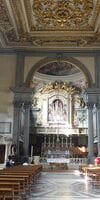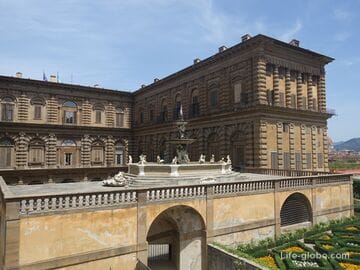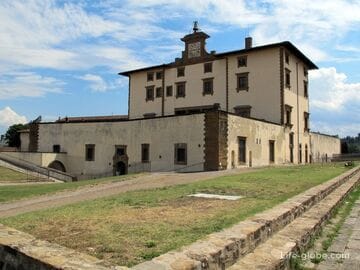San Marco or St. Mark is a complex in Florence, consisting of the church and monastery of the same name, in the monumental part of which the National Museum of San Marco is now located.
On the site of the current complex in the 12th century there was a monastery of Vallombrosa, which later passed to the Sylvestrine monks. Both of these groups were branches of the Order of St. Benedict.
Since the Silvestrins were accused of not properly observing the charter, they were evicted from the complex, which, already in a dilapidated state, in 1437, by the decision of Cosimo de' Medici the Elder, was transferred to the Dominicans from the monastery of San Domenico in Fiesole.
Since 1437, a new monastery complex was built on behalf of Cosimo de' Medici the Elder. The architect of the complex, built in the spirit of the Renaissance, was the Italian Michelozzo di Bartolomeo. The final dedication of the complex took place on Epiphany Night in 1443 in the presence of Pope Eugene IV and Archbishop of Capua Cardinal Niccolo d'acciapaccio.
Cosimo de' Medici had a cell in the monastery, adjacent to the cells of the monks, for his personal privacy. An outstanding feature of the monastery is the library on the ground floor with precious manuscripts and book collections. It was the first "public" library of the Renaissance, where people like Marsilio Ficino and Pico della Mirandola met during the Laurentian era.
During the history of the monastery, famous personalities lived and worked, such as: the artist Fra Angelico, Sant'Antonino, Ambrogio Catarino Politi, Fra Bartolomeo, Tommaso Caccini and Girolamo Savonarola, who preached against the decline of customs, and, eventually, was hanged and burned in the Piazza della Signoria in 1498. Since 1934, the Mayor of Florence, Giorgio La Pira, also resided in the monastery, and was later buried in the adjacent Basilica of San Marco.
Now in the monumental part of the monastery is the National Museum of San Marco or simply the Museum of San Marco (Museo Nazionale di San Marco, Museo di San Marco). The entrance to the museum leads through the so-called Monastery of St. Antonin (Chiostro di Sant'Antonino; the orphanage room, refectory, chapter room and monks' cells), decorated with frescoes by the Italian artist Bernardino Pochchetti of the 16th and 17th centuries.
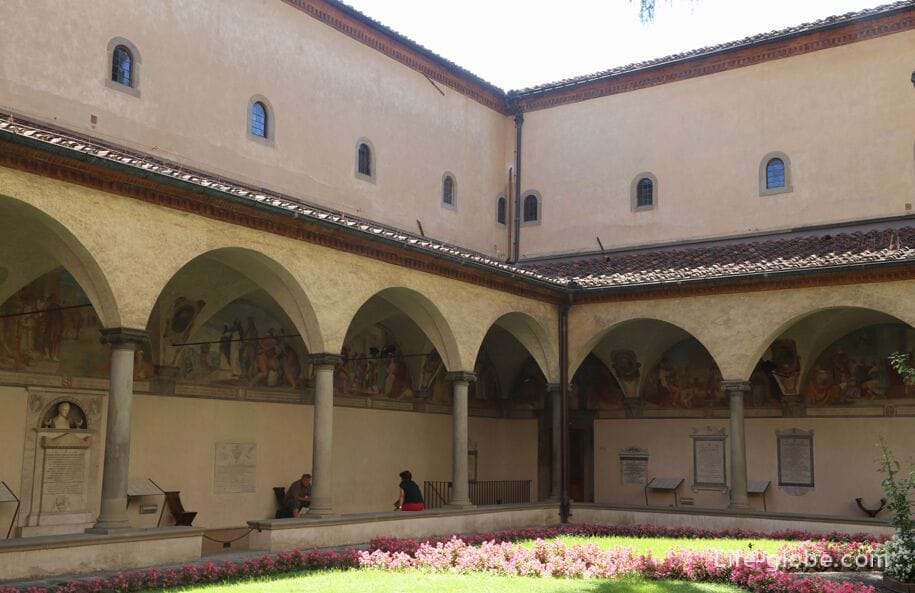
The museum contains the world's most extensive collection of works by the Italian early Renaissance artist Fra Angelico, who lived in the monastery between 1438 and 1445. The works are both wood paintings and frescoes. Among Angelico's main works are the Annunciation, a masterpiece of Renaissance painting, the Triptych of St. Peter the Martyr, the Altar of Annalena, the Last Judgment, the Altar of San Marco, the Madonna and Child and the Tabernacle of Linaioli. On the second floor of the monastery-museum there are frescoes that decorated the monastic cells, and executed by Angelico between 1438 and 1445.
The museum also houses other works by artists such as Fra Bartolomeo, Domenico Ghirlandaio, Alesso Baldovinetti, Jacopo Vignali, Bernardino Pochchetti and Giovanni Antonio Sogliani. From the works: "The Last Supper" by Ghirlandaio, "Madonna and Child" by Paolo Uccello, terracotta Della Robbia and the famous portrait of Girolamo Savonarola by Fra Bartolomeo, who lived in the monastery since 1489.
The museum's legacy is an exhibition of some architectural finds that came during the demolition of the city center in the nineteenth century and from the library built by Michelozzo, and enriched with an extraordinary collection of texts belonging to the humanist Niccolo Niccoli.



Entrance to the San Marco Museum is paid.
Website of the San Marco Museum: museo-di-san-marco-firenze.
Basilica of San Marco in Florence
The facade of St. Mark's Basilica in the neoclassical style was built by Fra Giovan Battista Paladini in 1777-1778.
The facade is divided by pilasters with capitals into three orders, and has one portal and a window. In the side belts there are two niches with statues (below) and ribbons and garlands (above); the upper register is decorated with a decorative bas-relief and a tympanum topped with an iron cross.
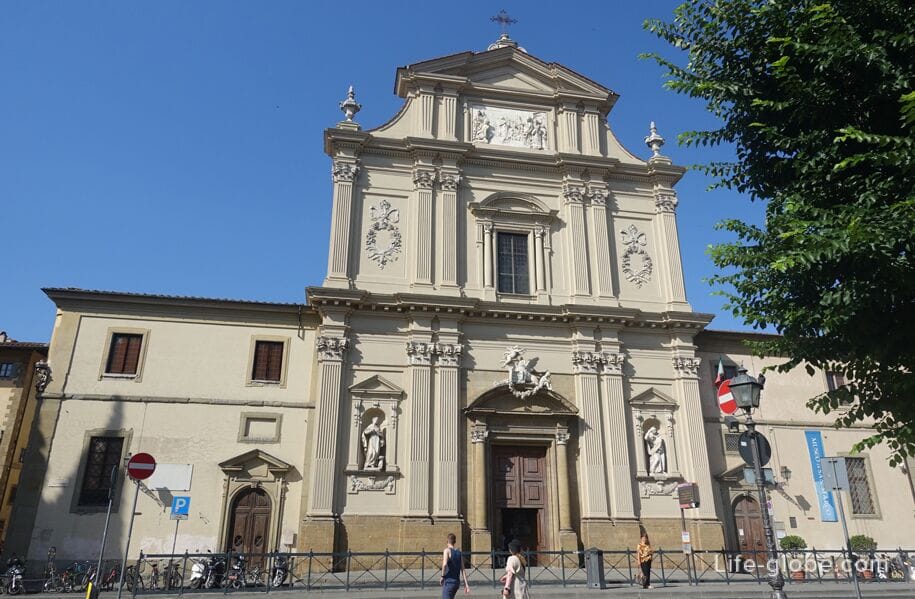
The church has one nave with side chapels designed in the late 16th century by Giambologna.
In ancient times, the interior of the basilica was covered with frescoes of the fourteenth century, some traces of which are still visible.
Also noteworthy in the interior are paintings from the 16th and 17th centuries.
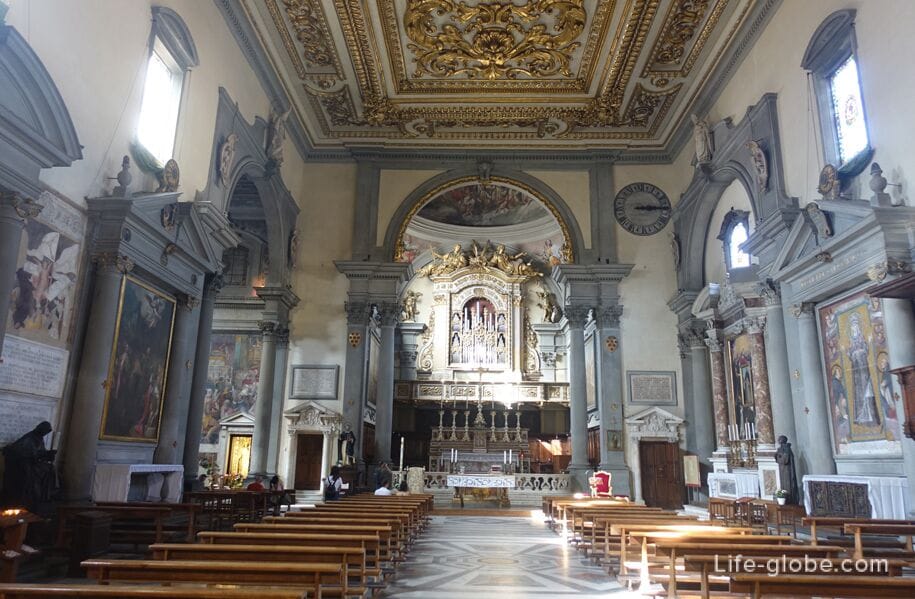
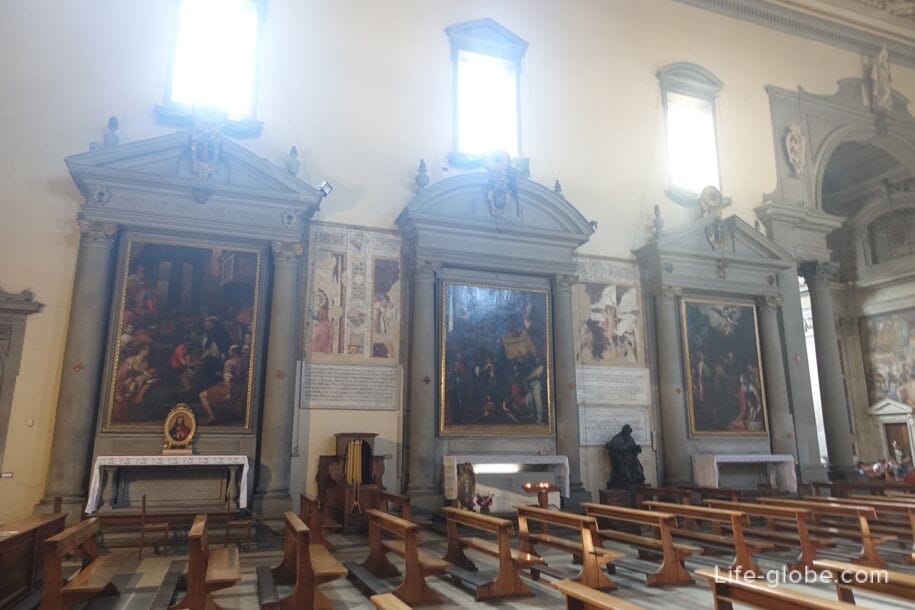
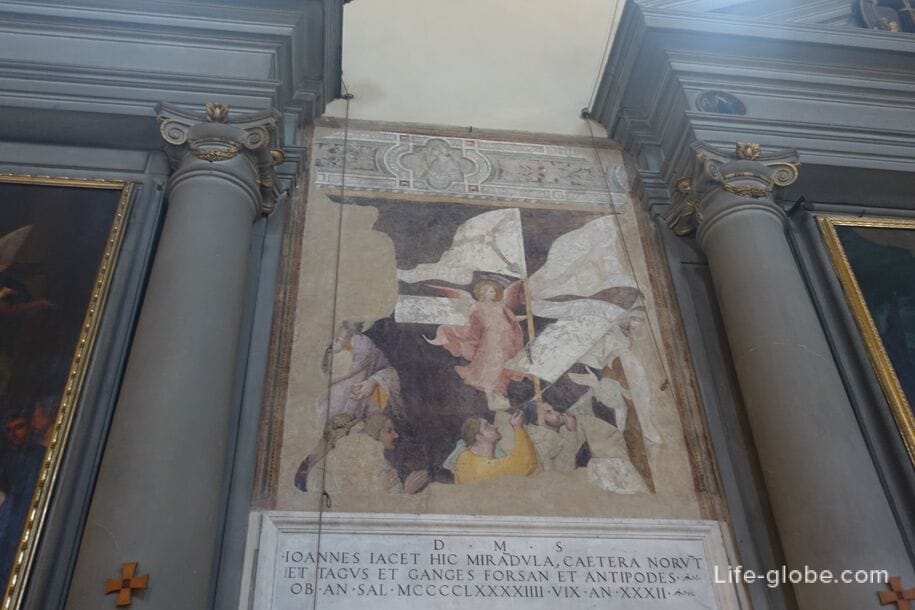
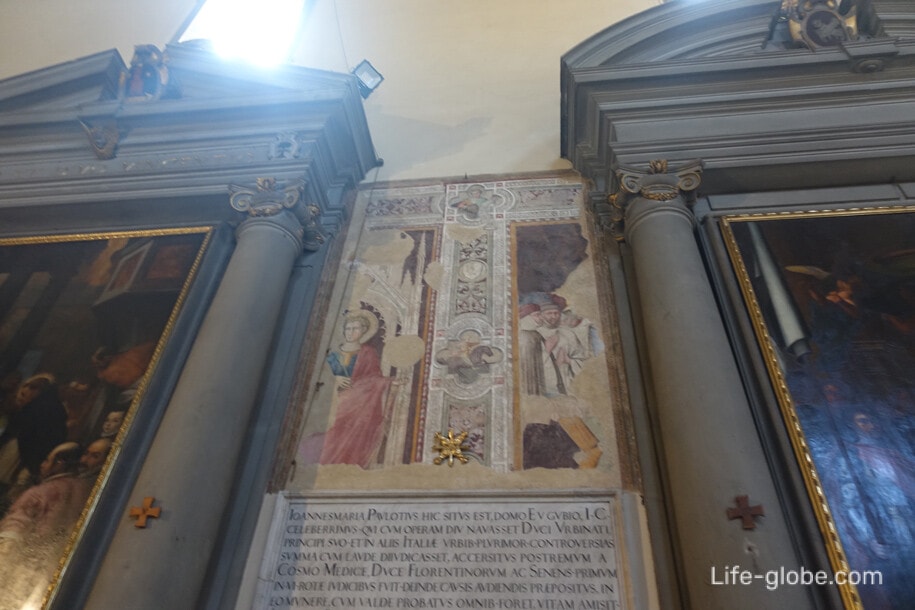
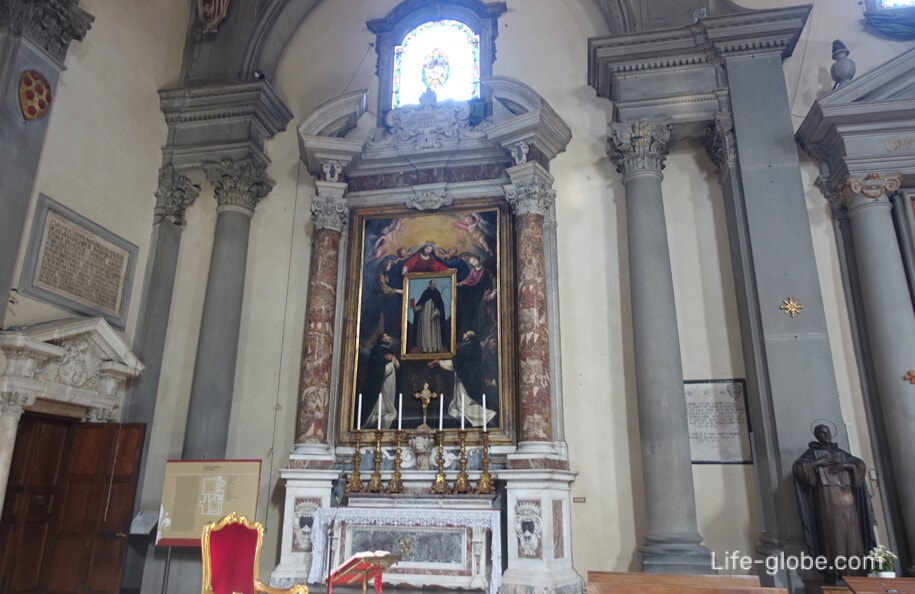
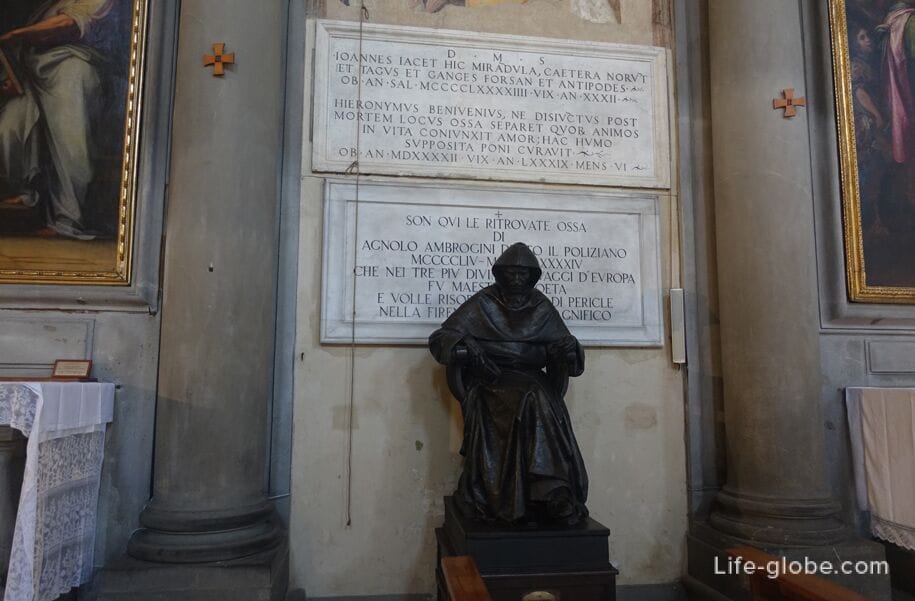
The carved ceiling and grandstands date back to the 17th century and were designed by Pier Francesco Silvani. The canvas in the center of the ceiling is decorated with the Assumption of the Virgin by Giovanni Antonio Pucci in 1725.
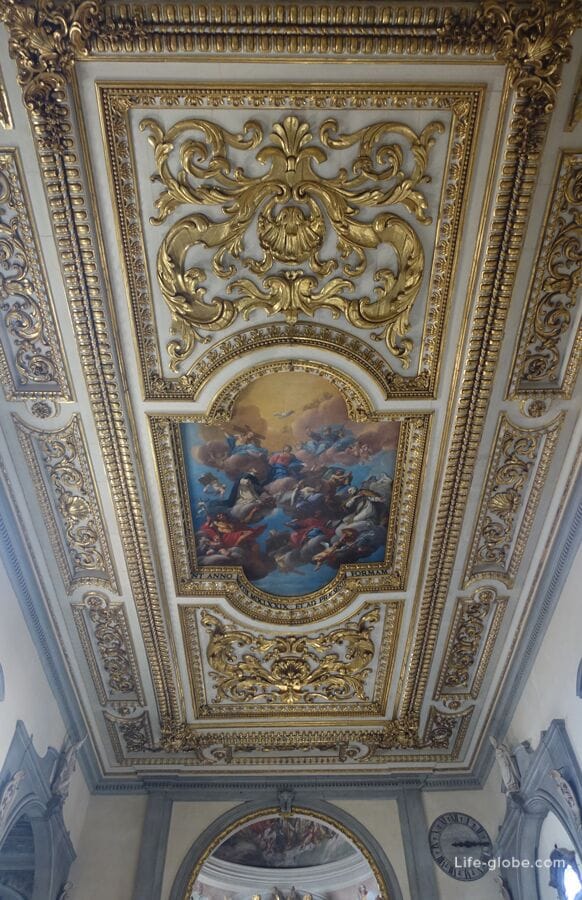
The crucifix on the main altar is the work of Fra Angelico from 1425-1428.
The dome was raised by Angelo Ferry by 1712 and decorated with frescoes by Alessandro Gherardini in 1717.
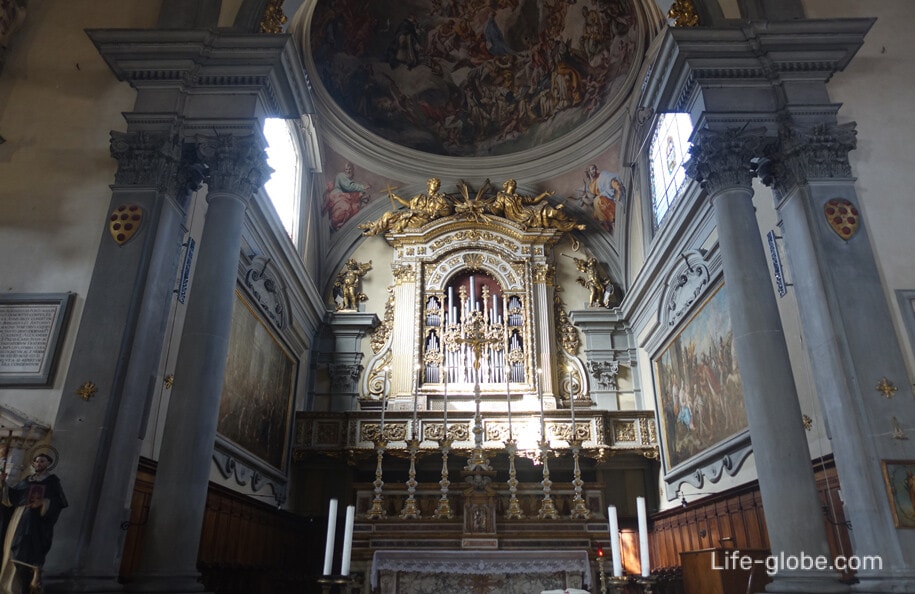
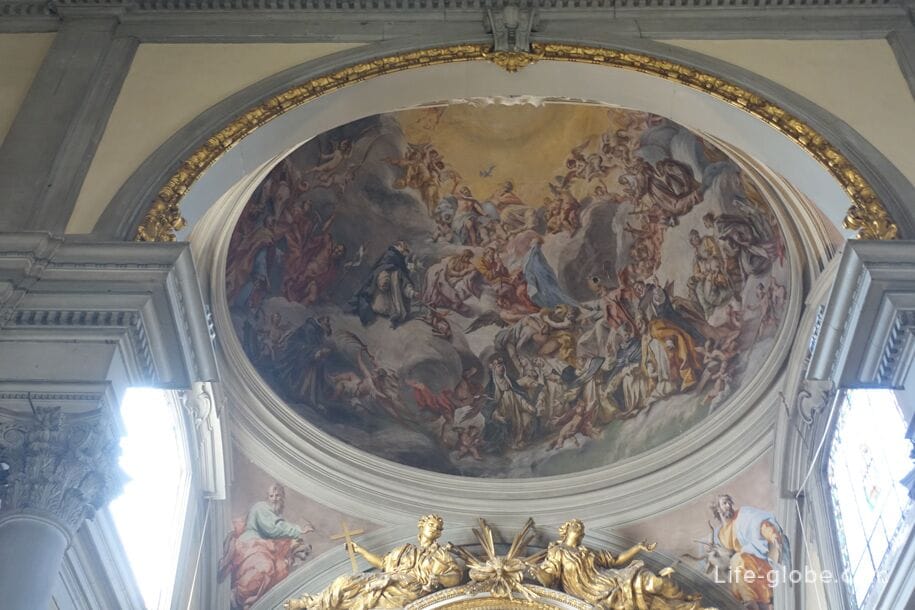
On the counter facade are the best remains of paintings from the fourteenth century, including a large Crucifix from the Orcagna school (circa 1365) and the Annunciation (documented in 1375), close to the style of Jacopo di Chione and modeled on the famous Miraculous Annunciata of the Basilica of Santissima Annunciata in Florence.
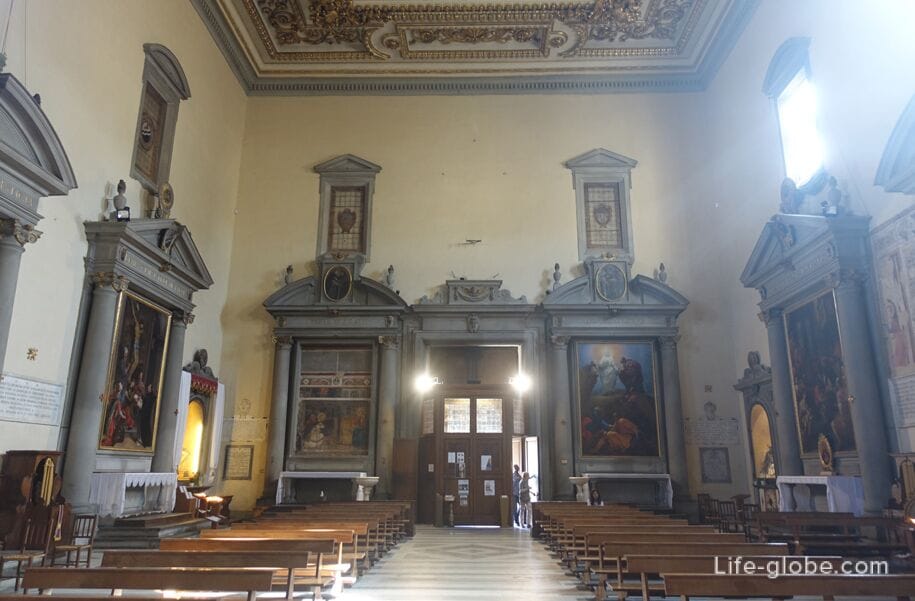
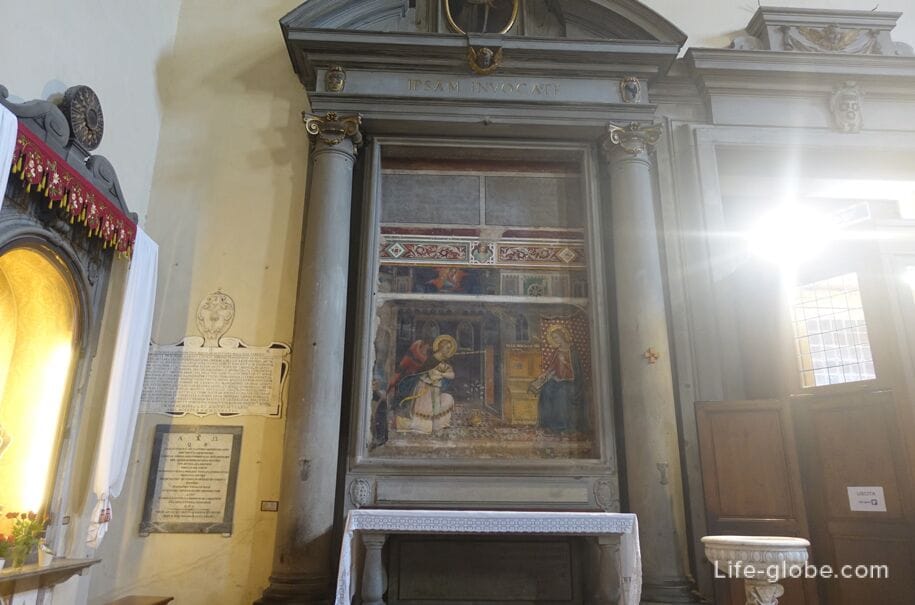
One of the most outstanding in the Basilica of San Marco is the Chapel of Salviati or Sant'Antonino (cappella Salviati, cappella Sant'Antonino), which was commissioned by the Salviati family and where the remains of the Florentine saint and Archbishop Antonio Pierozzi are kept.
The chapel was designed at the end of the 16th century as a separate room with an entrance from the outside. It was started from the crypt where members of the Salviati family are buried, presumably in 1580, as reported by the cartouche on the wall. The chapel has a dome and looks like a separate (independent) small basilica.
The upper chapel with the remains of the saint under the altar was designed by Giambologna and largely decorated by Alessandro Allori. The latter was responsible for the decoration of the grisaille (completed in 1588) and created an altarpiece with a Descent into Limbo (before 1584). The side panels are modern and depict Jesus healing a leper (left, Poppy) and the Calling of St. Matthew (right, Giovanni Battista Naldini).
Bronze bas-reliefs by Giambologna and his students depict episodes from the life of St. Anthony (1581-1587).
In the vestibule of the chapel, the walls are decorated with two large frescoes by Passignano: "Translation" and "Recognition of the Body of Sant'Antonino".
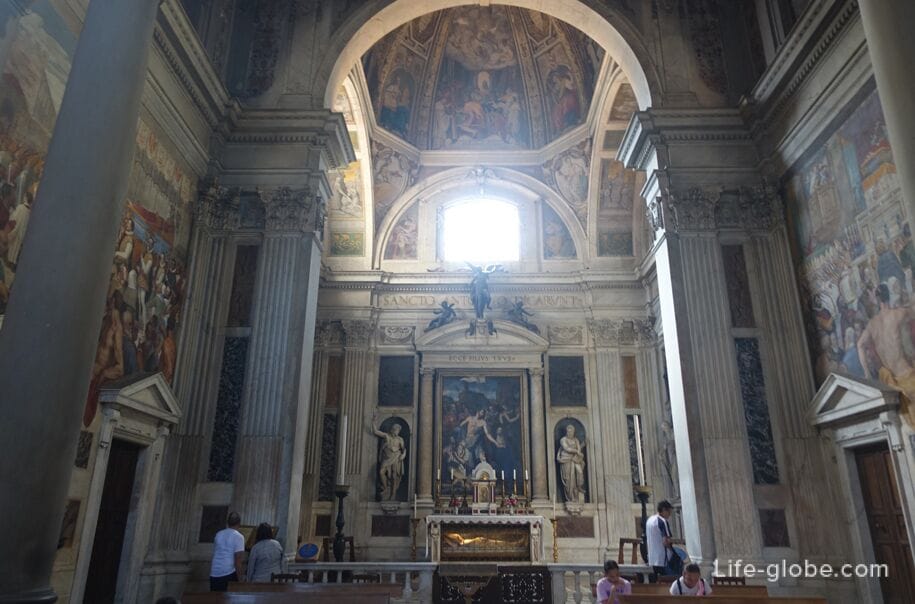
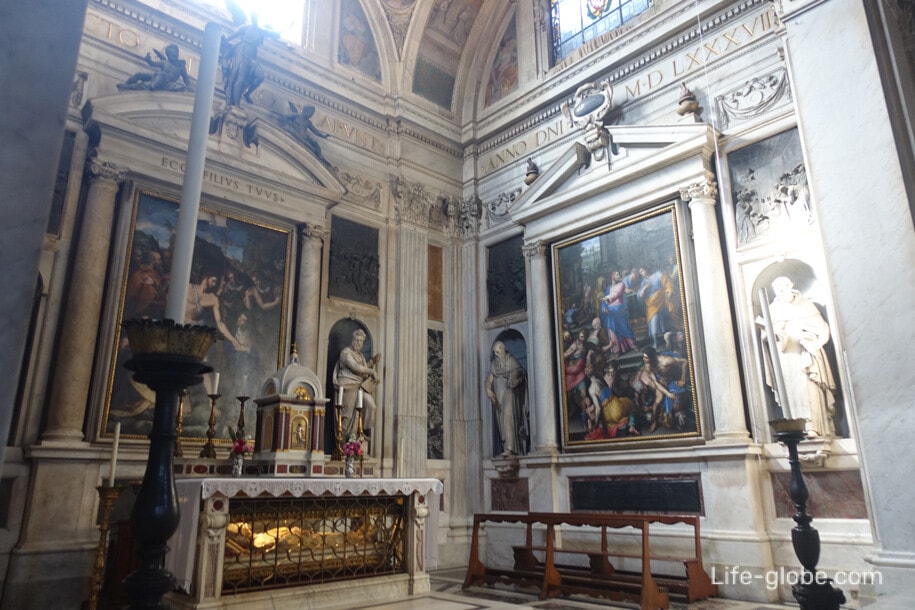



The grave of the Mayor of Florence, Giorgio La Pira, is located in the church.
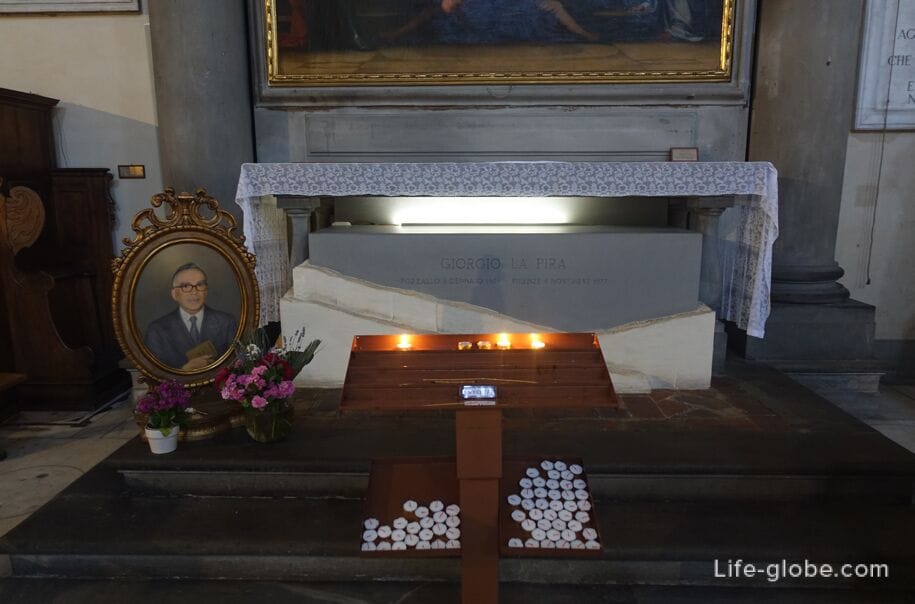
Services are held in the basilica.
Entrance to the basilica is free.
Practical information
Address of the San Marco complex: Piazza San Marco, 1-3, 50121 Firenze FI, Italy.
Coordinates of the San Marco complex: 43°46'42.0"N 11°15'31.0"E (43.778333, 11.258611).
All accommodation facilities in Florence (hotels, apartments, guest houses, etc.), including in the historical center of the city and more remotely from it, can be viewed and booked here




